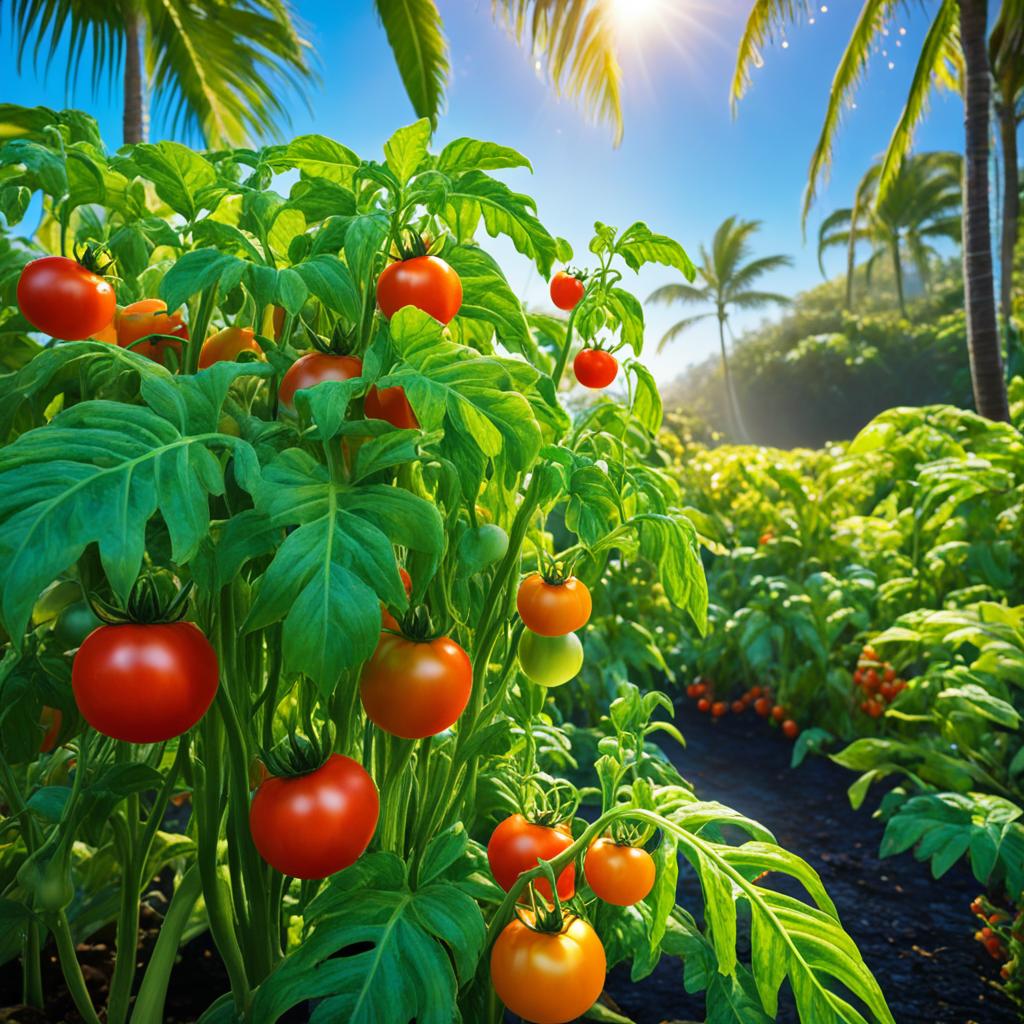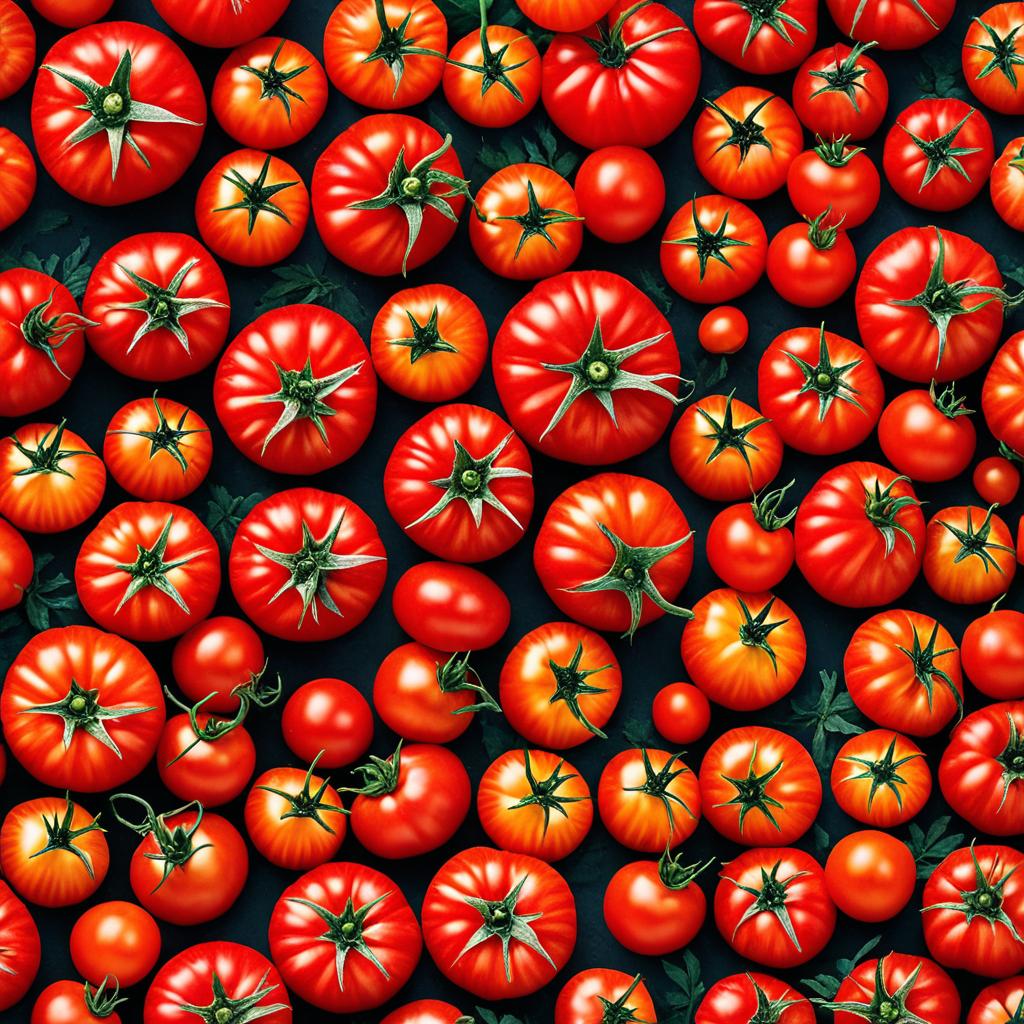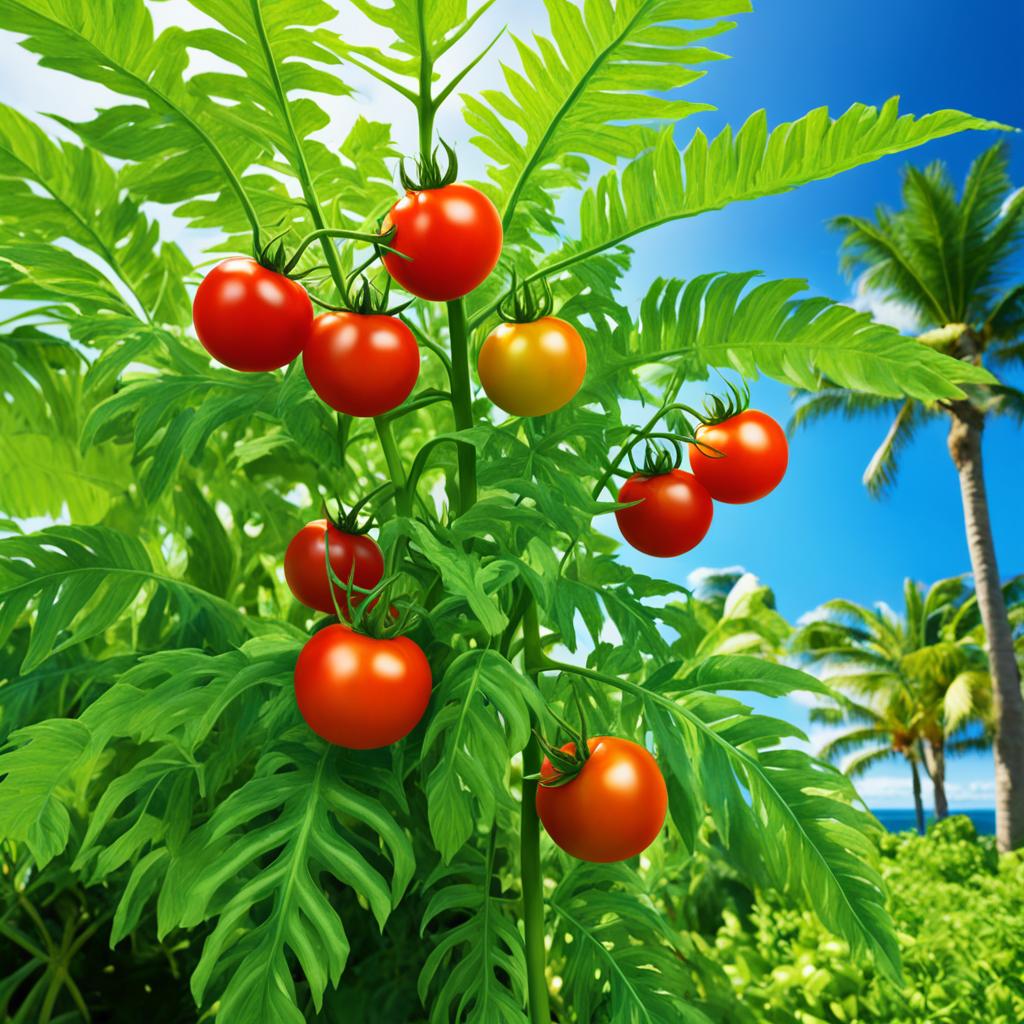When it comes to cultivating tomato plants, one common belief is that they can only be grown during specific seasons. But have you ever wondered if tomato plants can thrive year-round in a place like Hawaii? It turns out that the unique climate of the islands creates an ideal environment for tomatoes to grow continuously, regardless of the time of year. Whether you’re a gardening enthusiast or simply curious about the possibilities, let’s explore the fascinating world of tomato cultivation in Hawaii and discover the secrets to growing these juicy fruits throughout the year.
In this article, we will delve into the factors that contribute to successful tomato growth in Hawaii, including the specific tomato varieties that thrive in the islands’ diverse conditions. We will also discuss the various challenges that gardeners may face and how to overcome them, as well as provide valuable tips for soil preparation, fertilization, planting, and care. Additionally, we will explore effective pest control measures and provide insights into the optimal time for harvesting tomatoes in Hawaii.
So, if you’ve ever wondered if tomato plants can truly grow year-round in Hawaii or if you’re looking for practical advice on how to cultivate your own tomato garden, keep reading to unlock the secrets of this tropical paradise and enjoy a bountiful harvest of delicious tomatoes.
Factors to Consider for Growing Tomatoes in Hawaii

When it comes to growing tomatoes in Hawaii, several factors play a crucial role in determining their success. The unique climate and diverse growing conditions throughout the islands require careful consideration to ensure optimal growth and harvest. Here are some key factors to keep in mind:
- Coastal Areas: Coastal regions with ample sunlight and drier conditions are generally more favorable for tomato cultivation in Hawaii. The combination of sunlight and well-drained soil aids in the healthy development of tomato plants.
- Elevation and Moisture: Higher elevations often experience increased moisture levels, which can lead to fungal and mildew issues that negatively affect tomato plants. Monitoring moisture levels and providing proper ventilation can help mitigate these challenges.
- Colder Climates: Certain areas in Hawaii experience cooler temperatures, which can be challenging for growing tomatoes. However, adopting techniques such as greenhouse cultivation or container gardening can create a more controlled environment, enabling successful tomato growth.
- Tomato Varieties: The selection of tomato varieties plays a significant role in their ability to thrive in Hawaii. Some tomato varieties are better suited to the specific growing conditions of the islands, with a greater tolerance for heat, humidity, and other environmental factors.
Understanding these factors and tailoring your approach accordingly will greatly increase your chances of a successful tomato harvest in Hawaii.
Tomato Varieties that Thrive in Hawaii

When it comes to growing tomatoes in Hawaii, selecting the right tomato varieties is essential for a successful harvest. Some varieties are better suited to thrive in Hawaii’s unique climate than others. Choosing smaller-sized tomatoes with thicker skin can help increase their resistance to pests and diseases, ensuring healthier plants.
There are several popular tomato varieties that have proven to do well in Hawaii. These include:
- Cherry tomatoes: These bite-sized tomatoes are known for their sweet flavor and are perfect for snacking.
- Golden yellow tomatoes: These vibrant tomatoes add a burst of color to salads and other dishes.
- Roma or San Marino tomatoes: These larger, meatier tomatoes are great for making sauces and pastes.
In addition to these well-known varieties, the University of Hawaii Seed Lab offers tomato seeds specifically bred and adapted for Hawaii’s climate. Popular varieties from the seed lab include Healani, Kewalo, and Anahu. These varieties have been carefully selected and tested to thrive in Hawaii’s unique growing conditions.
By choosing the right tomato varieties, gardeners in Hawaii can significantly increase their chances of a successful harvest. Whether you prefer the sweetness of cherry tomatoes or the versatility of Roma tomatoes, there are plenty of options to suit your taste and growing conditions.
Overcoming Challenges in Hawaii’s Tomato Cultivation

Tomato cultivation in Hawaii can present its fair share of challenges. From bugs and insects to mold and mildew, there are several environmental factors that can impede tomato plant growth. However, with proper strategies and a focus on tropical-friendly varieties, you can overcome these challenges and achieve successful tomato cultivation in Hawaii.
One effective technique is to grow tomatoes in containers, under eaves, or in greenhouses. These methods provide added protection against pests and diseases, as well as control over environmental factors such as temperature and moisture. By creating a controlled environment, you can minimize the impact of external challenges on your tomato plants.
Regular inspection of your tomato plants is crucial to identify any early signs of pest infestations or fungal issues. Prompt action, such as water sprays and the use of insecticidal soaps, can help prevent these problems from escalating. Taking proactive measures and staying vigilant will contribute to the overall health and productivity of your tomato plants.
For additional guidance, the College of Tropical Agriculture and Human Resources (CTAHR) offers a comprehensive guide to growing tomatoes in Hawaii. This resource provides valuable insights on tackling challenges specific to the region and creating an environment that supports healthy and thriving tomato plants.
By employing these strategies and utilizing available resources, you can overcome the challenges associated with tomato cultivation in Hawaii. With dedication and proper care, you’ll be rewarded with a bountiful harvest of delicious and homegrown tomatoes.
Soil Preparation and Fertilization for Tomato Plants in Hawaii
When it comes to growing tomato plants in Hawaii, proper soil preparation and fertilization are crucial for their success. Hawaiian soil is known for being poor and rocky, requiring amendments to create an optimal growing environment for tomatoes. Additionally, tomatoes thrive in moderately acidic to neutral soil with a pH range of 6.0 to 6.8.
To prepare your soil for tomato cultivation, start by incorporating good organic matter, such as compost or well-rotted manure. This will help improve soil structure, drainage, and nutrient content. Additionally, consider enriching the soil with specific amendments or nutrients that are beneficial for tomato plants. These can include bone meal, fish emulsion, kelp meal, or a balanced organic fertilizer.
One effective technique for tomato plant care is mulching. By applying a layer of organic mulch around the base of the plants, you can retain soil moisture, regulate temperature, and suppress weed growth. This will provide a healthier growing environment for your tomatoes and facilitate their growth and development.
When it comes to fertilizing tomato plants in Hawaii, using a general-purpose fertilizer with a balanced nutrient ratio is recommended. A good option is a 16-16-16 or 10-20-20 NPK (nitrogen, phosphorus, potassium) ratio fertilizer. This will provide the essential nutrients needed for healthy plant growth, strong root development, and increased fruit production.
Remember to follow the manufacturer’s instructions for fertilization rates and timings to avoid over-application, which can lead to nutrient imbalances or plant burn. Regularly monitor the health and growth of your tomato plants to determine if additional fertilizer applications are necessary.
| Soil Preparation Tips | Fertilization Tips |
|---|---|
|
|
Planting and Care Tips for Growing Tomatoes in Hawaii
When it comes to growing tomatoes in Hawaii, proper planting and care techniques are essential for success. Whether you choose to start from seeds or seedlings, these tips will help you cultivate healthy and productive tomato plants in the tropical paradise of Hawaii.
- Starting from Seeds: Planting tomatoes from seeds allows for a larger quantity of plants at a more cost-effective price. Begin by filling seed trays or pots with a well-draining seed-starting mix. Plant the seeds according to the package instructions and keep them in a warm location with indirect sunlight. Make sure to water the seeds gently to avoid disturbing them. Once the seedlings reach a height of about 2 to 3 inches and develop their first set of true leaves, they are ready to be transplanted into larger containers or directly into the garden.
- Starting from Seedlings: Using seedlings provides a head start in the growing season, allowing you to enjoy homegrown tomatoes sooner. Purchase healthy tomato seedlings from a reputable nursery or garden center. When transplanting the seedlings, make sure to dig a hole deep enough to cover the stem up to the first set of leaves. This encourages strong root development. Gently firm the soil around the seedling and water thoroughly.
- Plant Spacing and Support: When planting tomato plants in Hawaii, give them ample space to grow. Place the plants about 15 inches apart to ensure proper air circulation and minimize the risk of disease. Provide support for the plants by using cages, trellises, or stakes. This helps keep the plants upright and prevents sprawling, allowing for better sunlight exposure and improved fruit development.
- Watering: Proper watering is crucial for the success of tomato plants in Hawaii. Tomatoes require consistent moisture, so water them regularly. Take into account the local rainfall conditions and adjust your watering schedule accordingly. Aim to keep the soil evenly moist, but be careful not to overwater, as it can lead to root rot and other problems. Water at the base of the plants to avoid wetting the foliage, which can contribute to fungal diseases.
- Sunlight and Mulching: Tomatoes thrive in sunny locations, so choose a spot in your garden that receives at least six to eight hours of direct sunlight per day. To maintain moisture levels and suppress weed growth, apply a layer of mulch around the base of the plants. Organic materials such as straw, wood chips, or compost can be used as mulch. Mulching also helps regulate soil temperature and prevents evaporation, ensuring optimal growing conditions for your tomato plants.
Incorporating these planting and care tips into your tomato gardening routine can help you achieve a bountiful harvest of juicy and flavorful tomatoes in the beautiful state of Hawaii. Take advantage of the unique climate and embrace the joy of growing your own tomatoes, whether you’re a seasoned gardener or just starting out.
Pest Control for Tomato Plants in Hawaii
Hawaii’s diverse environment is conducive to various pests that can affect tomato plants, including whitefly, leaf miners, slugs, and mice. To prevent infestations, it is recommended to implement effective pest control measures for your tomato plants.
1. Protecting your Tomato Plants
One way to prevent pest infestations is by keeping your tomato plants covered. This can be done by using netting or lightweight fabric to create a barrier that keeps pests away while allowing sunlight and air circulation.
Growing tomatoes in containers is another effective method for pest control. Container gardening provides better control over soil quality and reduces the risk of soil-born pests. Additionally, elevating your tomato plants in raised beds can make it harder for pests to reach them.
2. Regular Inspection and Water Sprays
Regular inspection is crucial for detecting pests at an early stage. Take the time to carefully examine your tomato plants for any signs of infestation, such as chewed leaves, holes, or sticky residue.
Water sprays can be used to remove pests from your tomato plants. Use a gentle spray of water to dislodge insects, such as whiteflies or leaf miners, from the leaves. This can help control their populations and minimize damage to your plants.
3. Using Insecticidal Soaps
Insecticidal soaps are an effective and environmentally friendly option for controlling pests on tomato plants. These soaps work by suffocating pests, such as aphids or mites, without harming the plants. Follow the instructions on the product label and apply the soap to the affected areas of your tomato plants.
Treating tomato plants at the first sign of pests is essential for preventing further damage. Regular monitoring and proactive pest control measures will help ensure a successful harvest of healthy, pest-free tomatoes.
Pest Control Table:
| Pest | Description | Pest Control Methods |
|---|---|---|
| Whitefly | Small, flying insects that feed on the underside of leaves | Use sticky traps, insecticidal soaps, or beneficial insects like ladybugs |
| Leaf Miners | Larvae that tunnel through the leaves, causing damage | Remove affected leaves, spray with water, or use insecticidal soap |
| Slugs | Soft-bodied pests that consume foliage and fruits | Set up beer traps, handpick at night, or use organic slug control products |
| Mice | Small rodents that can damage both plants and fruits | Use deterrents like physical barriers or humane traps |
Harvesting and Enjoying Tomatoes in Hawaii
When it comes to harvesting tomatoes in Hawaii, timing is key. You can start picking them when the bottom portion starts to turn pink, but for the best flavor, it’s recommended to wait until they are three-quarters ripe. This ensures that you enjoy the sweetness and juiciness that Hawaii’s warm climate imparts to the fruit.
Depending on the number of plants you have, you can expect a continuous harvest throughout the growing season, which typically ranges from 60 to 80 days after planting. This means you’ll have a steady supply of ripe tomatoes to add to your favorite recipes or enjoy fresh from the vine.
Speaking of recipes, the possibilities are endless when it comes to using freshly harvested tomatoes. From sun-dried tomato pesto to homemade tomato sauce, stuffed tomatoes, and oven-roasted delights, the flavors of Hawaii’s tomatoes can elevate any dish. Growing your own tomatoes not only ensures the quality and freshness of the fruit but also opens up a world of culinary creativity and satisfaction.


